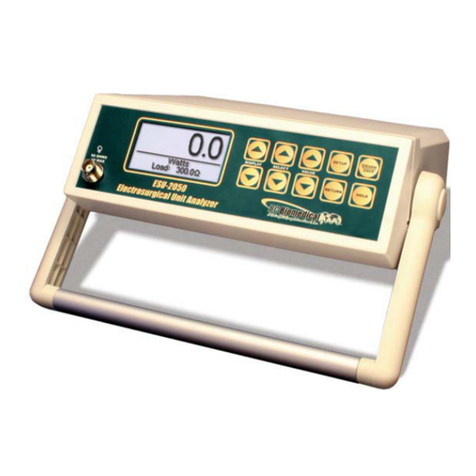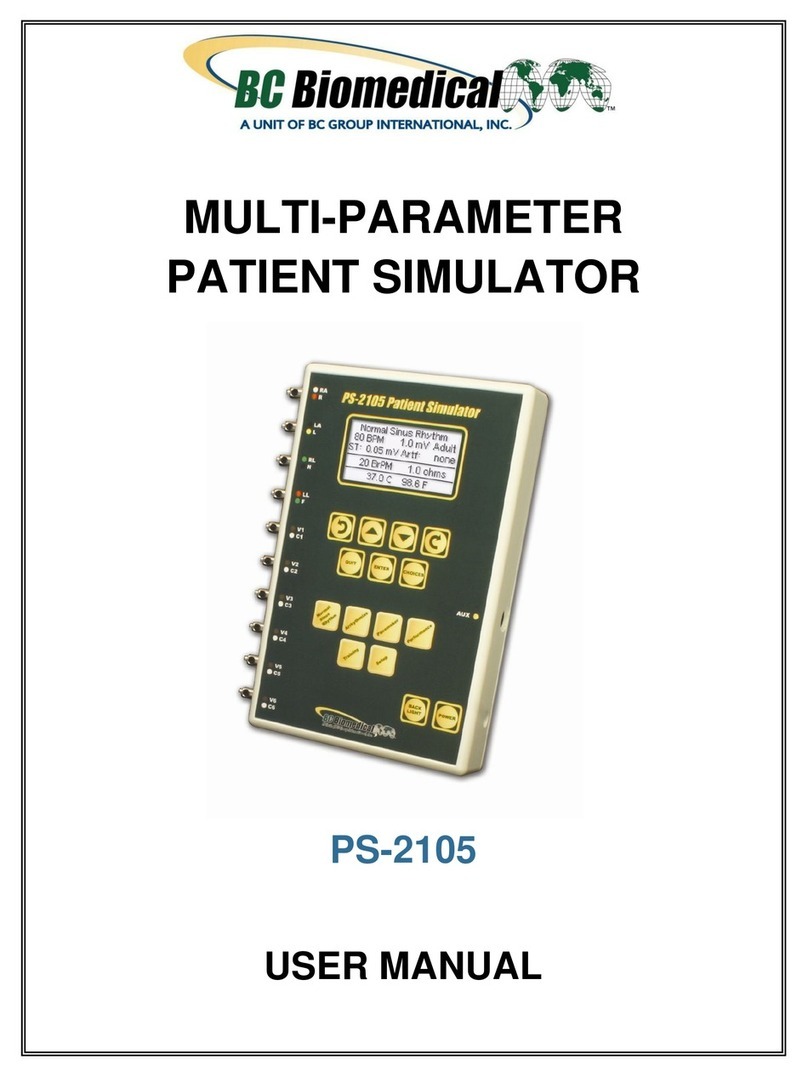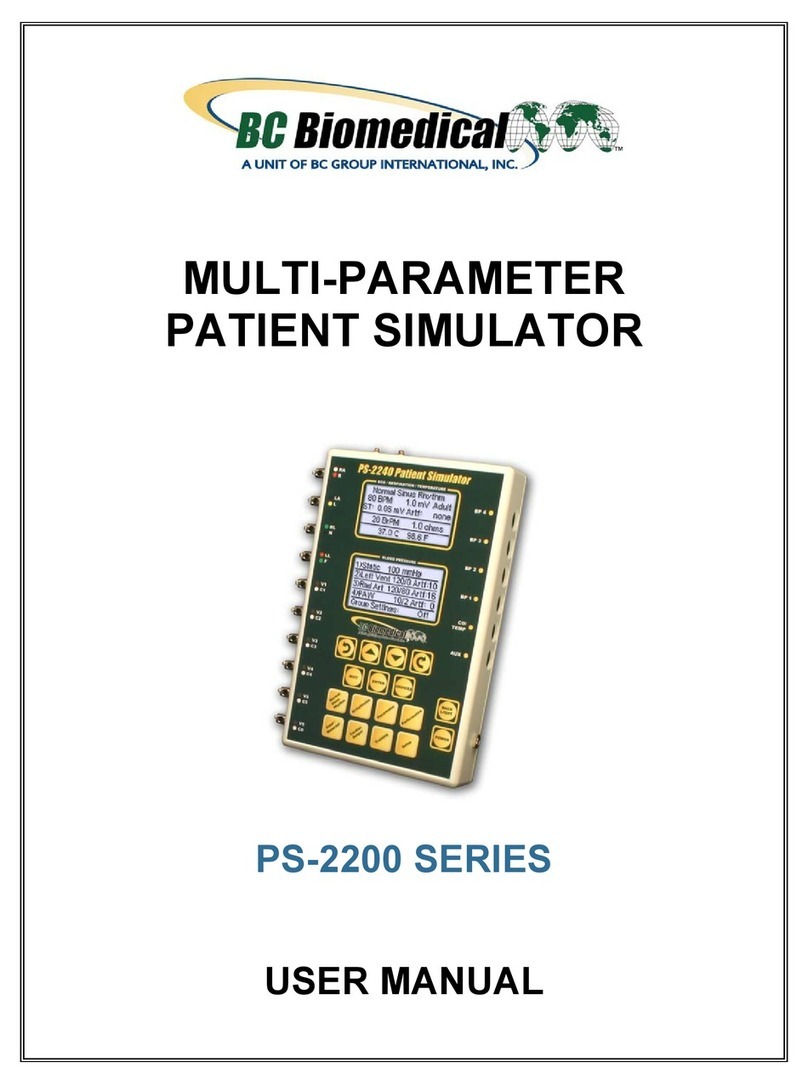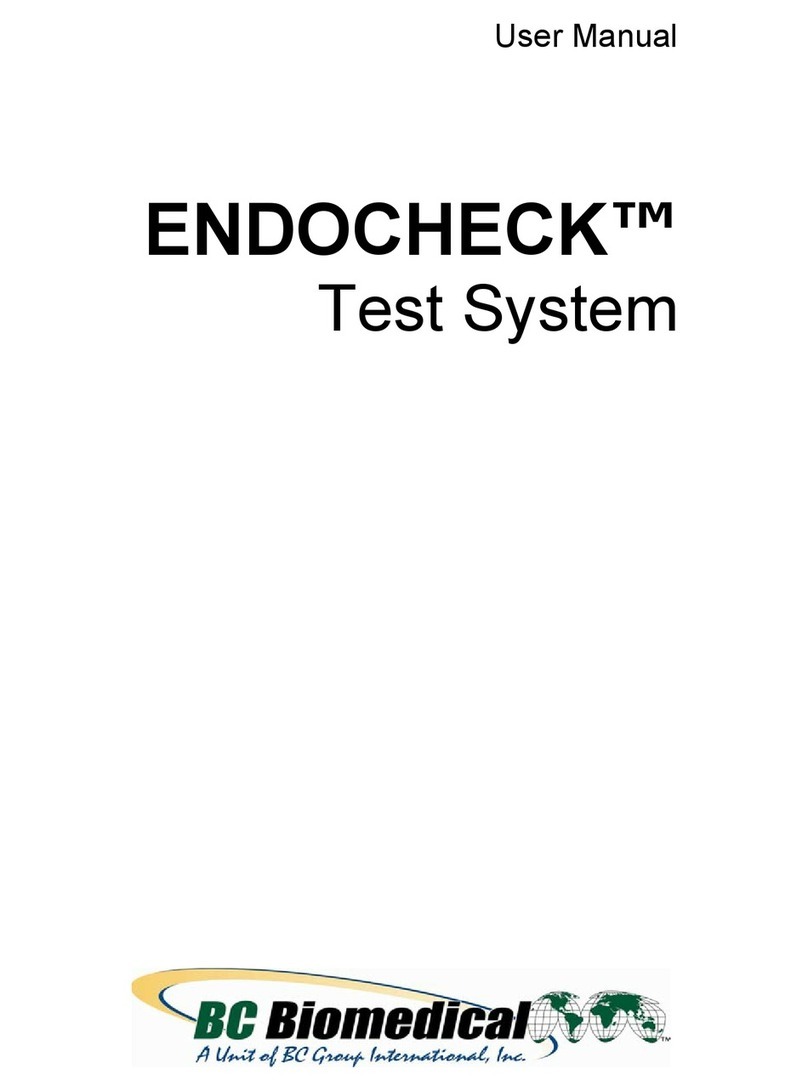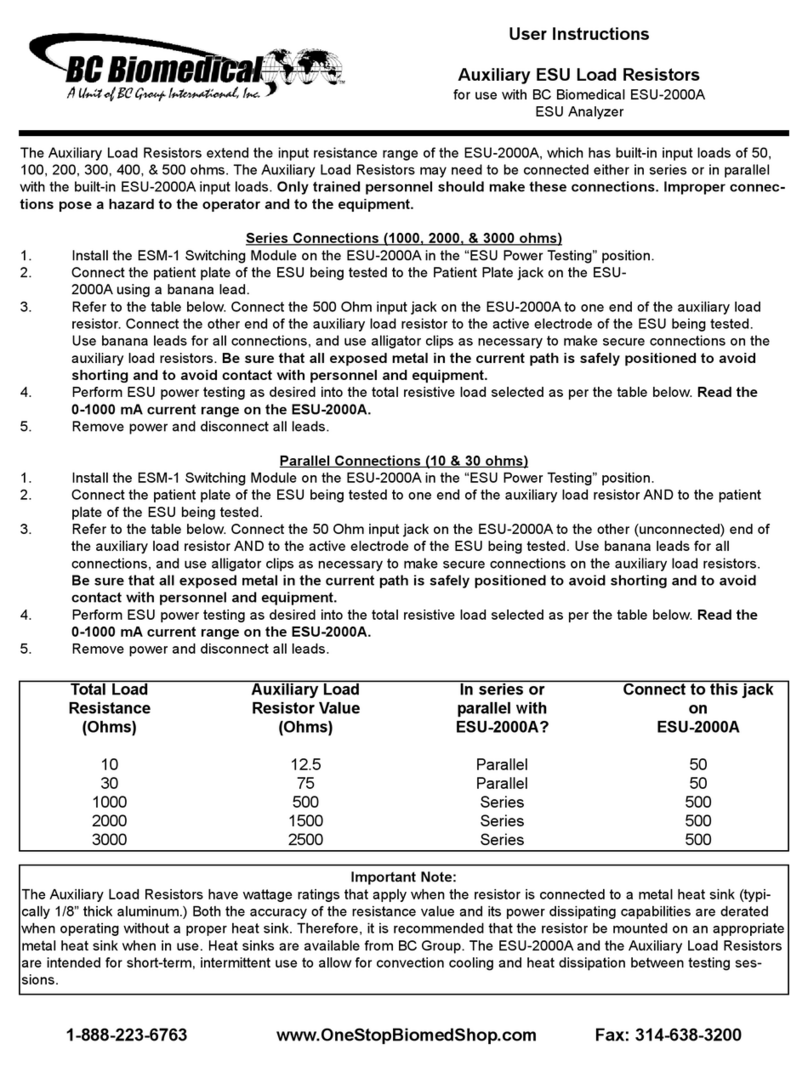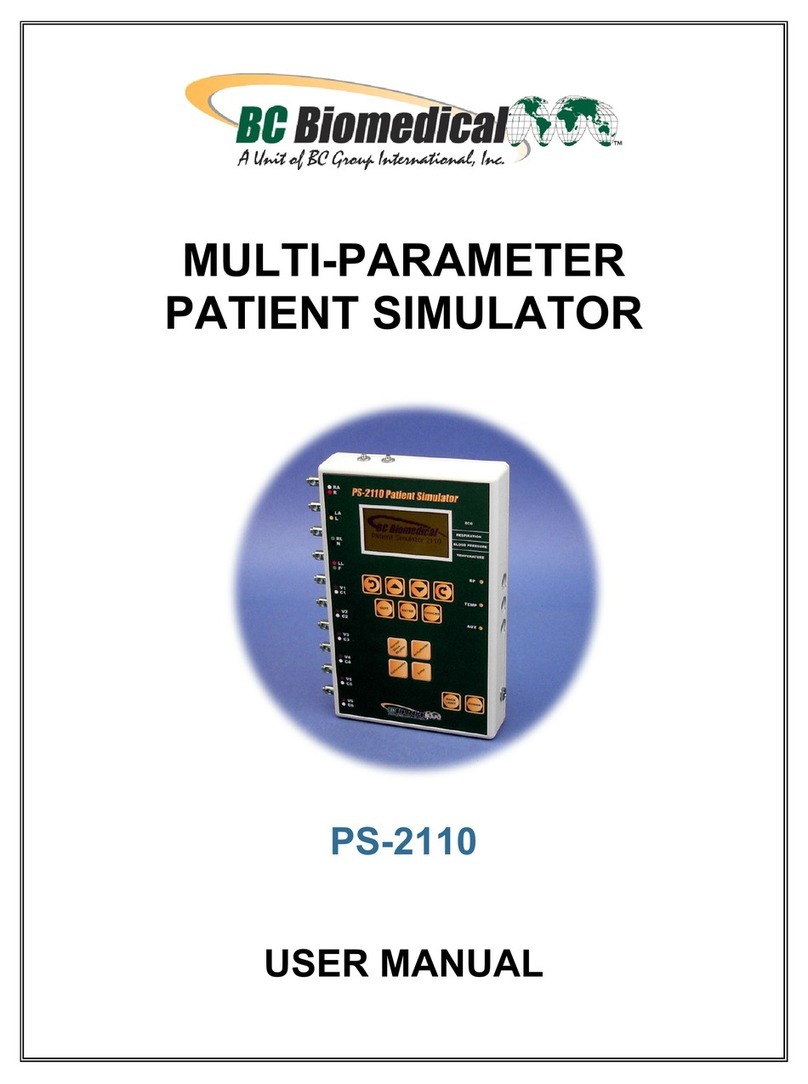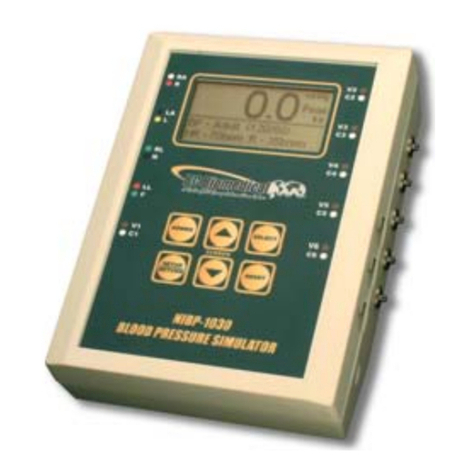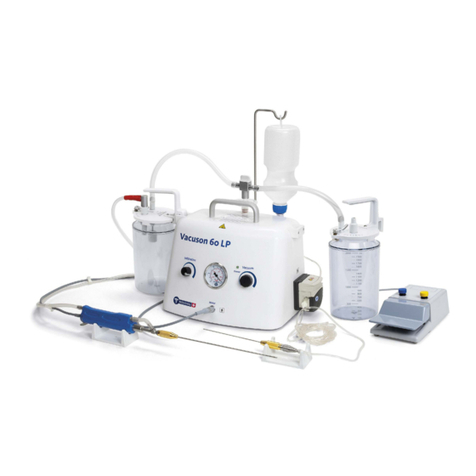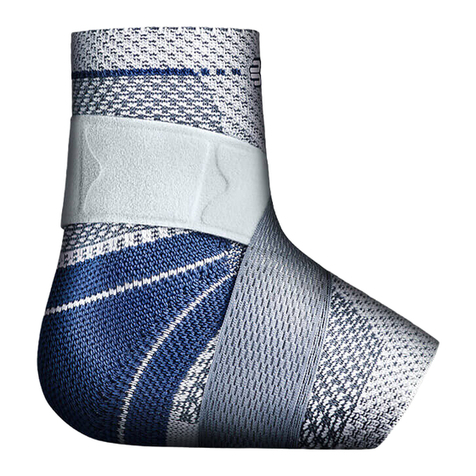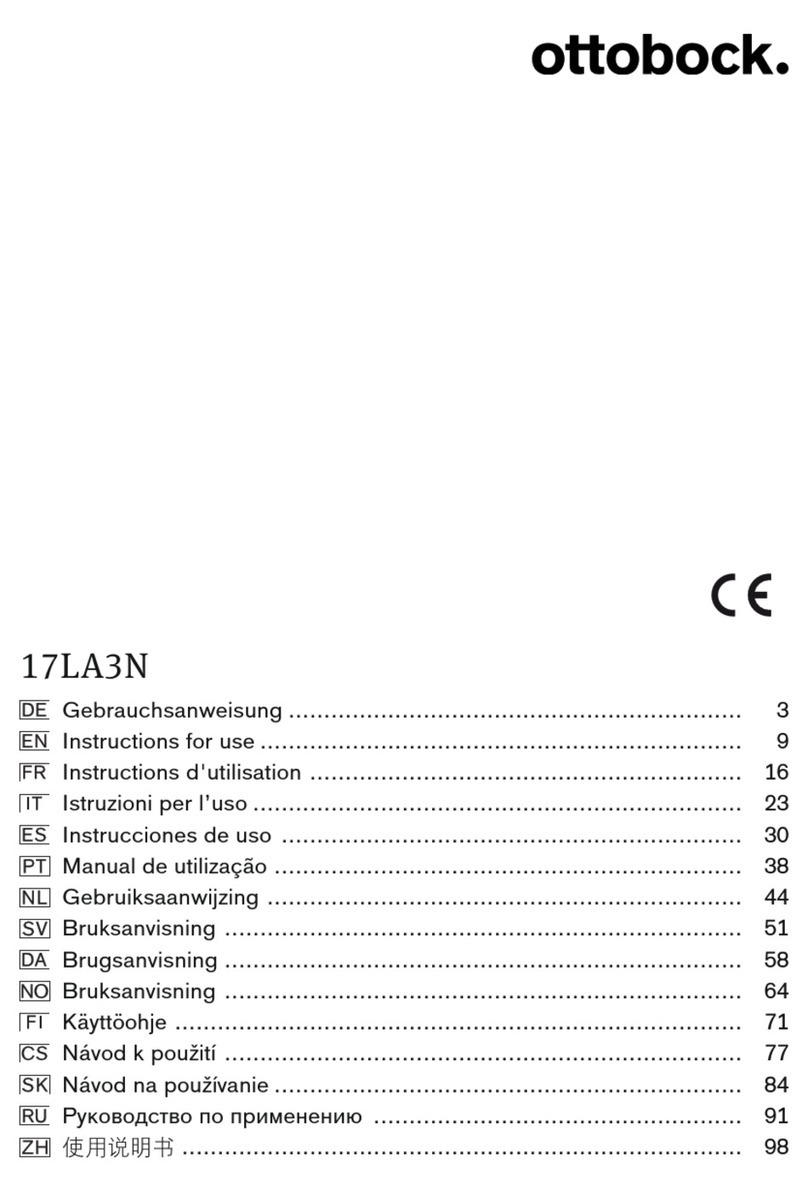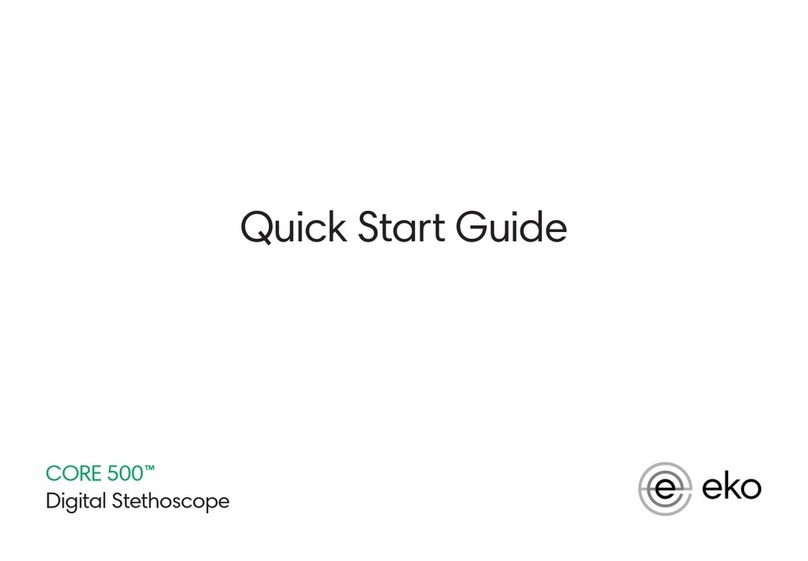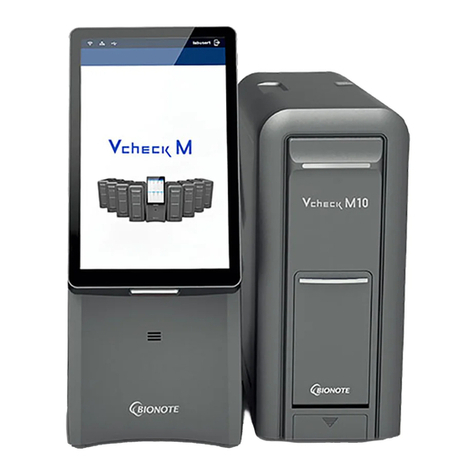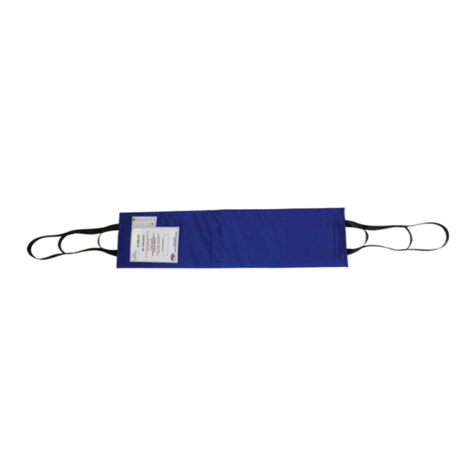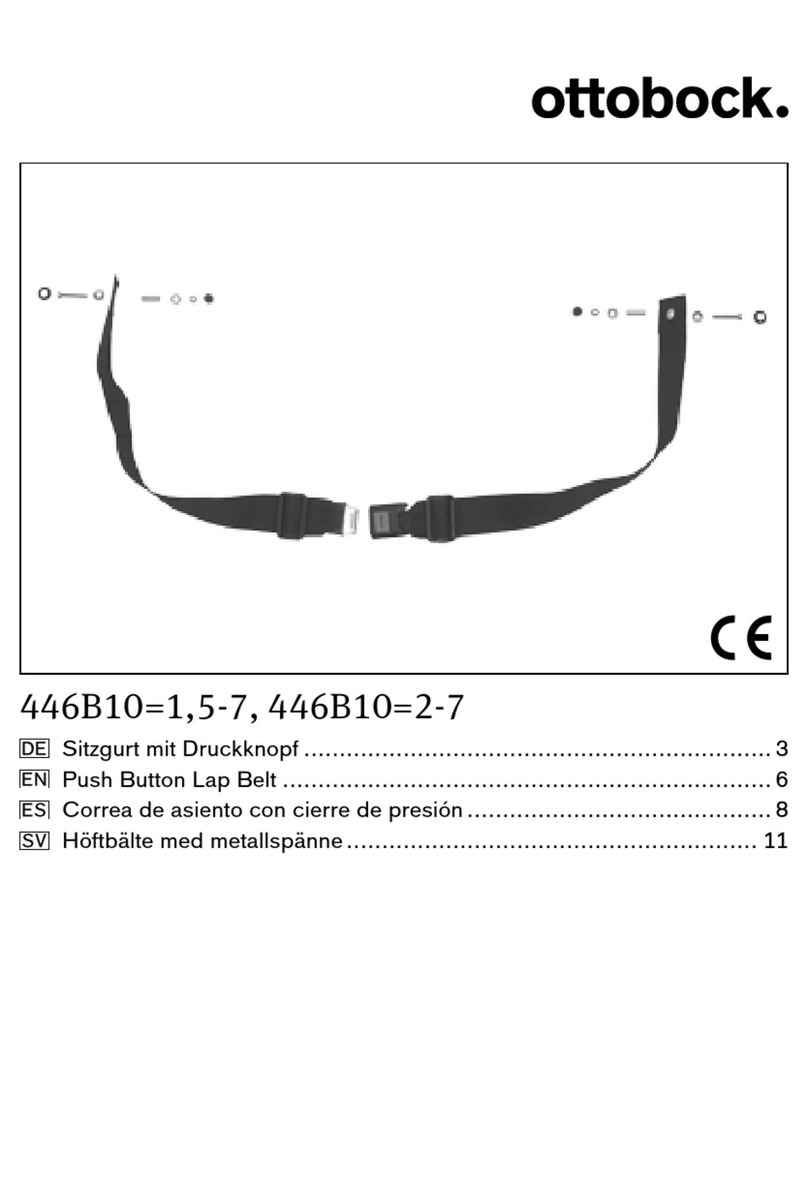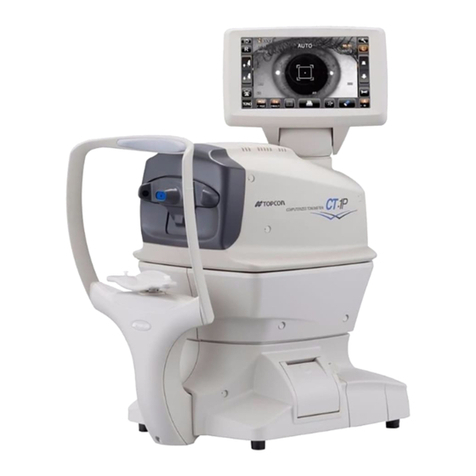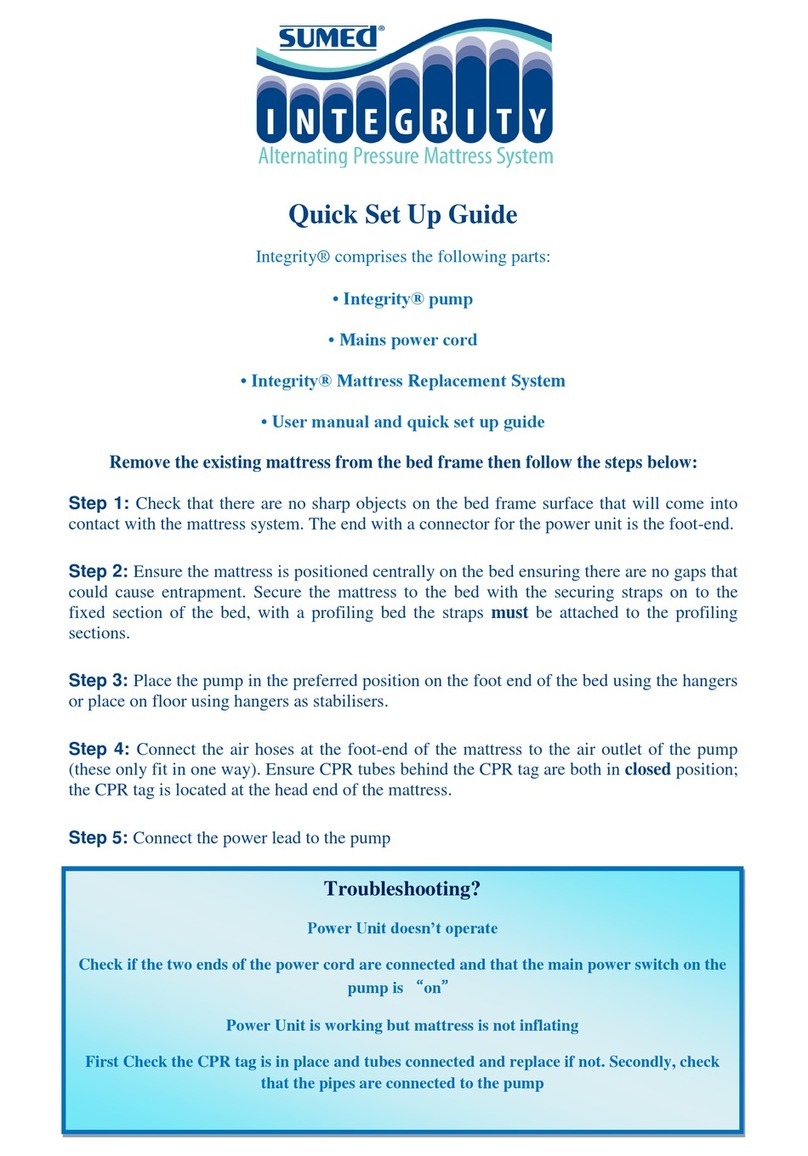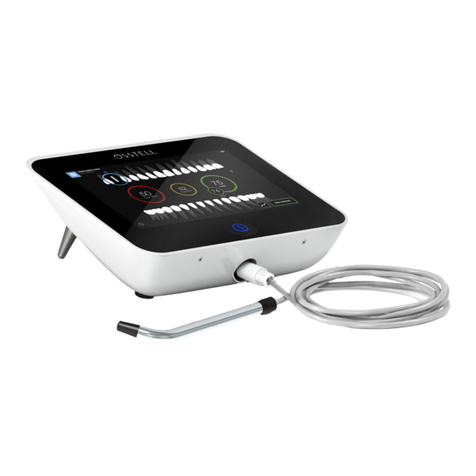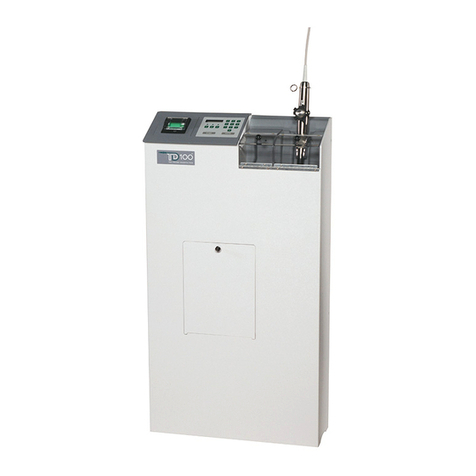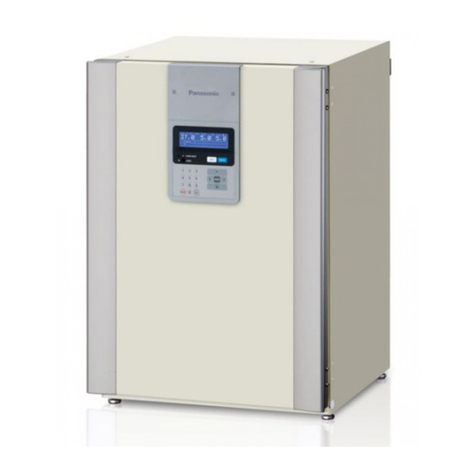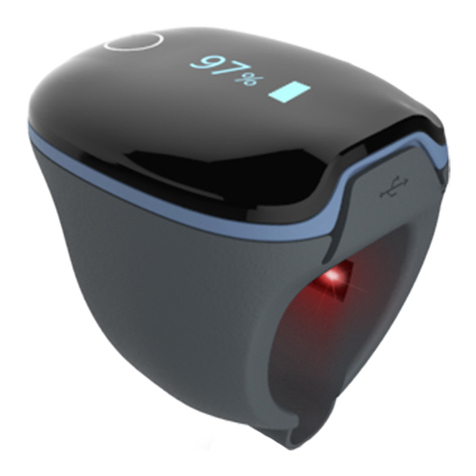
3
I. GENERAL WARNINGS AND CAUTIONS
CONTRAINDICATION: Do not use with reflectance or ear clip sensors. Use only with transmittance type,
finger or toe sensors.
WARNING: FingerSimsare fragile and must be handled with care, they contain glass.
CAUTION: Federal law restricts this device to sale by or on the order of a physician.
CAUTION: The movement of the FingerSimrelative to the oximeter sensor may cause erroneous pulse rate
and/or oxygen saturation readings. Use the FingerSimHolder to facilitate pulse generation
without introducing FingerSim™ movement relative to the oximeter sensor.
CAUTION: Do not use a FingerSimthat is cracked or leaking fluid.
CAUTION: Avoid extended exposure to sunlight.
CAUTION: The SpO2simulation by the FingerSimis temperature dependent. See Charts 6, 7 and 8 for the
appropriate adjustment. Allow at least one-hour stabilization at room temperature before using.
CAUTION: Do not store the FingerSimoutside the recommended Long Term Storage Temperature range
(32°F-104°F). NOTE: Temperatures outside this range for short duration are acceptable (for
example during shipping).
CAUTION: When testing flexible sensors, ensure the emitter and detector are vertically aligned on opposite
sides of the FingerSim.
CAUTION: Do not use beyond the calibration date.
CAUTION: No test system can simulate all possible operating conditions a pulse oximeter may encounter. Use
the FingerSimas an adjunct to other indications to determine proper pulse oximeter operation.
CAUTION: Improper insertion of the FingerSiminto the Holder can cause breakage. Insert the Phantom as
shown in Figure 7.
II. PURPOSE
The FingerSimPulse Oximeter Test System enables the healthcare professional to evaluate pulse oximeter and
sensor function at three simulated light absorption conditions. These absorption conditions are set to simulate a
typical finger at nominally 97%, 90%, and 80% SpO2levels. In addition, a pulse oximeter’s response to various
pulse amplitudes and rates can be simulated.
Before the availability of the BC Biomedical FingerSim, pulse oximetry systems (oximeter plus sensor) were not
easily tested. The oximeter’s measurement of the small pulsatile blood component and the interrelationship of the
oximeter calibration curve with the light emitting characteristics of the sensor made a true oximeter system tester
difficult to conceive. The BC Biomedical FingerSimSystem, when used as an adjunct to other indicators, aids
the healthcare professional in assessing performance of both oximeter and sensor.
CONTRAINDICATION: Do not use with reflectance or ear clip sensors. Use only with transmittance type,
finger or toe sensors.
CAUTION: No test system can simulate all possible operating conditions a pulse oximeter may encounter. Use
the FingerSimas an adjunct to other indicators to determine proper pulse oximeter operation.













